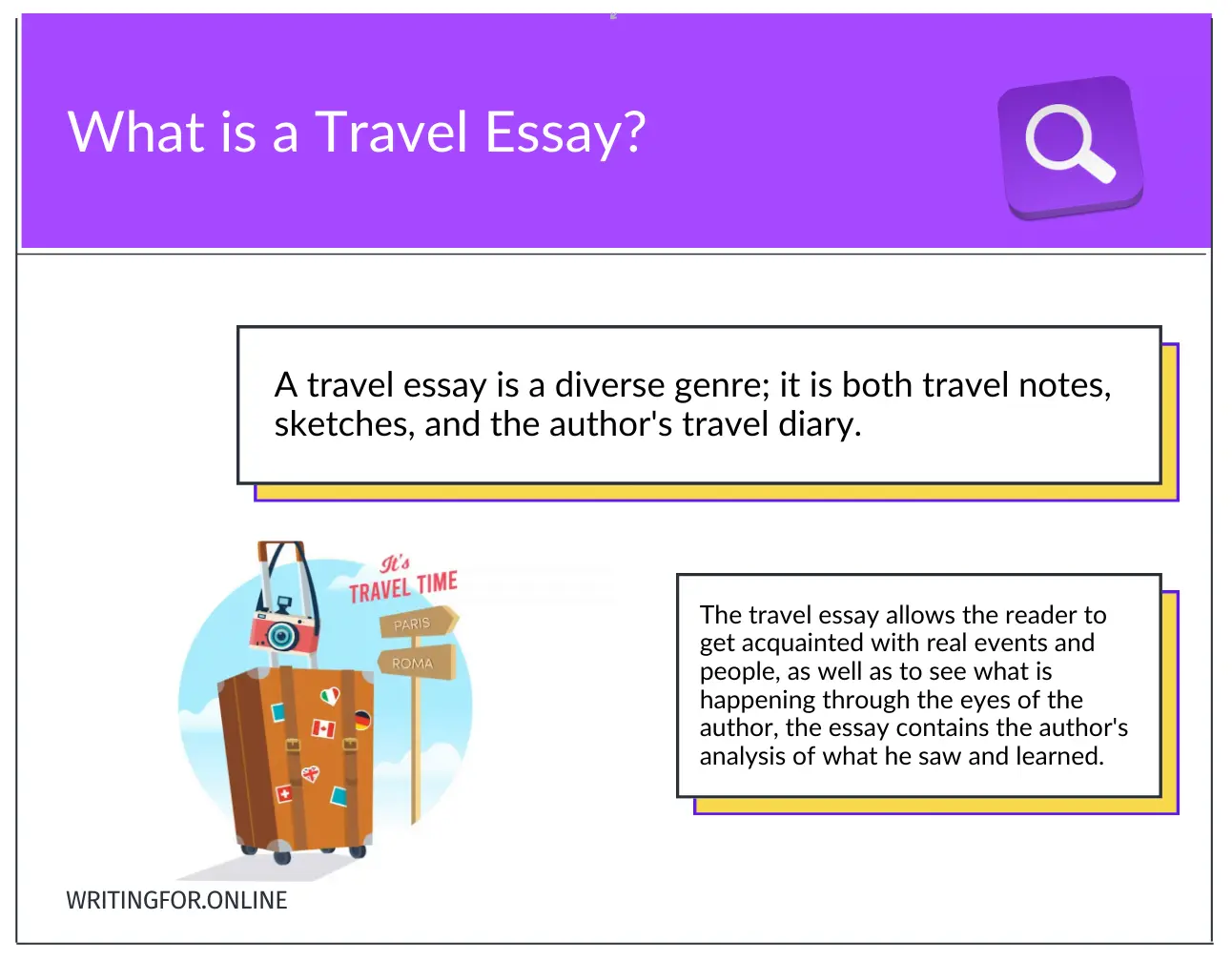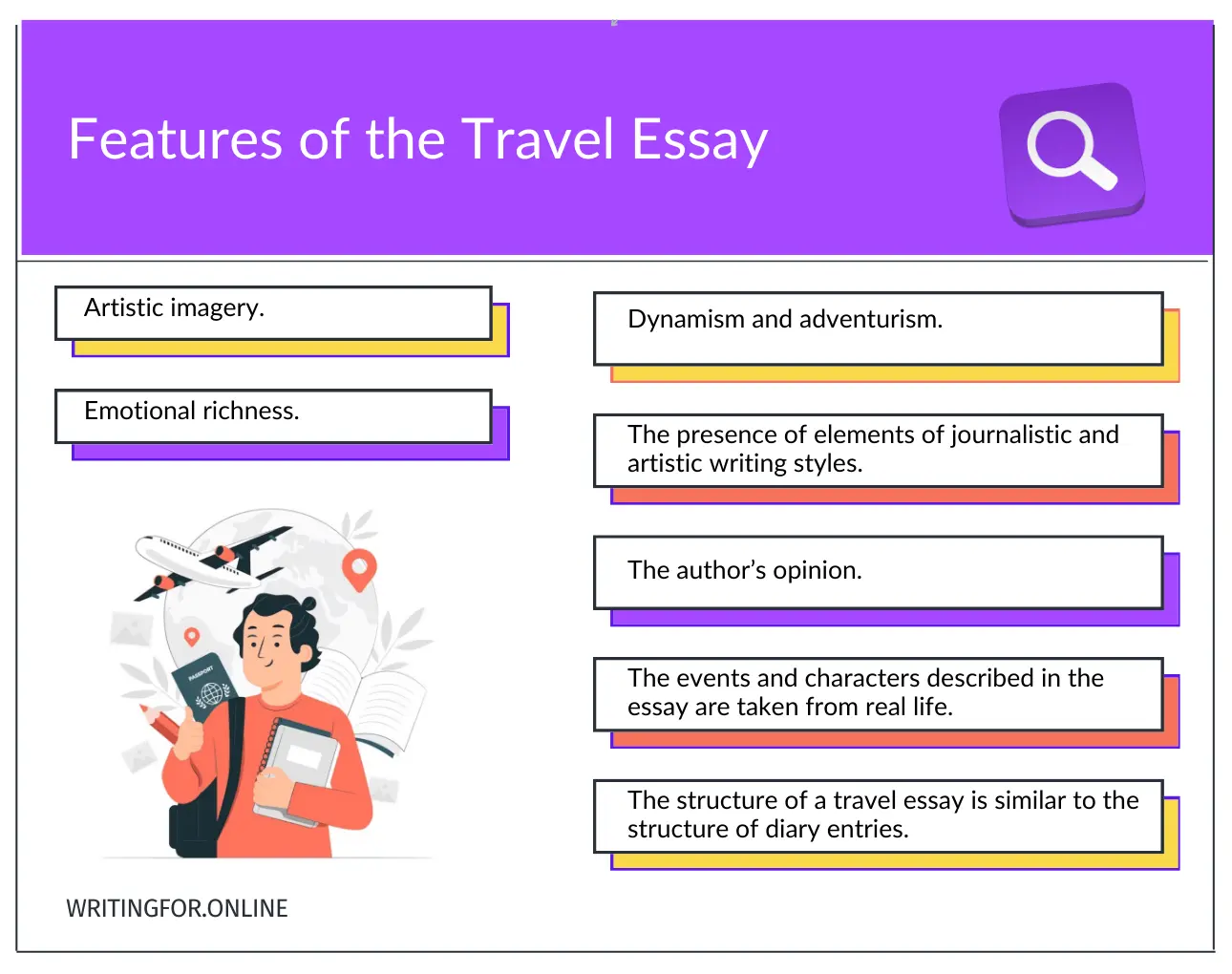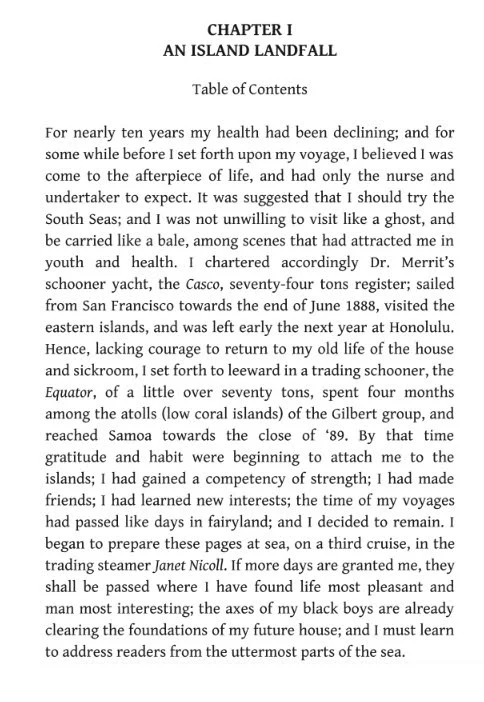The travel essay allows to tell readers about impressions, interesting human types, new things happening in the world, and to share thoughts about what the author saw and experienced in a relaxed and free form. Journalists actively use the possibilities of this genre.
In this article, you will learn:
An essay is one of the most versatile and multifaceted literary forms.
What Is Essay: Definition
An essay is a short narrative that briefly describes events, facts, and people.
An essay is considered one of the varieties of a story that combines elements of literature and journalism. This type of text belongs to a special kind of author’s or writer’s journalism, which is considered the pinnacle of journalistic skill.
The essay refers to the journalistic writing style, namely to its artistic and journalistic genre.
The “sketching” of such texts is expressed in the fact that the author strives to outline the portrait and character of the hero or to display the main points and contours of the problem situation. Therefore, very often the form of presentation of information is quite rough, and free.
Types of Essays
There are several types of essay classification. But I propose to study the following four in more detail:
- Portrait or biographical essay. The portrait essay focuses on a person, and not fictional, but taken from real life. The author’s main task is to reveal the inner world of the hero, his values, and his personality.
- Problem-solution essay. The purpose of this essay is to study some problematic situations. A problem essay can be compared to an article. As in the article, the essayist explores the problem and finds out the causes of its occurrence, further development, and solutions. The difference between an essay and an article is that in an essay the author engages in a dialogue with the reader: he shares his thoughts, explores conflict situations, tries to get to the heart of the problem, and comprehends what is happening. Such observation of the development of the conflict often causes feelings and various emotions, both in the readers of the essay and in its author.
- Travel essay. The travel essay is a description of the events, meetings, and incidents that happened to the author during his creative journey. More often, a journalist already has the main idea for a future essay and the purpose of the trip, and the impressions and facts received during the trip are already “working” for this idea. For example, the goal of a journalist is to study what traditions have been preserved among people living in different settlements or explore how the state solves certain social problems in various cities of the country.
- Historical essay. In such an essay, the author presents historical facts and events related to the subject of research in chronological order, analyzes historical information, and gives his interpretation.
What Is a Travel Essay?
A travel essay is a diverse genre; it is both travel notes, sketches, and the author’s travel diary.

Therefore, in its structure, a travel essay is similar to diary entries: the events are described sequentially, as the author gets acquainted with them.
In addition to the fact that the travel essay allows the reader to get acquainted with real events and people, as well as to see what is happening through the eyes of the author, the essay contains the author’s analysis of what he saw and learned.
The author of the travel essay is faced with the task of holistically recreating a picture of reality. Most often, a travel essay reflects a rather long time process.
The travel essay, apart from its literary form, is actively used in advertising journalism and on television (television travel journalism). Most travel programs are written in the form of a travel essay.
Features of the Travel Essay

The main features of the travel essay are:
- Artistic imagery.
- Emotional richness.
- Dynamism and adventurism.
- The presence of elements of journalistic and artistic writing styles.
- The author’s opinion.
- The events and characters described in the essay are taken from real life.
- The structure of a travel essay is similar to the structure of diary entries.
- Urgency and relevance of the researched problem.
- Slang, jargon words, or special terminology.
- To confirm a personal point of view, the author uses facts, evidence, quotations, statistics, etc.
The most striking stylistic features of the travel essay are:
- First of all, this is the expressed position of the author. All narrative is connected with the author’s opinion and view of the situation. Often, the author of the essay acts as a protagonist, interconnected with the main character.
- Dialogue with the reader. Using various stylistic devices, the journalist seeks to arouse the reader’s interest and emotionally involve him in the plot of his essay, thus making the reader a participant in the described events.
Writing a Travel Essay
The process of writing a travel essay is quite time-consuming. To write an essay, it is not enough just to choose a topic, to collect and analyze information.
The author’s task is to rethink the information received and transform it into a special essay form.
The degree of the artistry of the essay may vary depending on its purpose: one text may be more specific and documentary, while the other may be as creative as possible.
Thus, in each essay, there should be both artistic creativity and facts in various proportions (depending on the purpose and subject matter). Often the material for the plot is so rich, unpredictable, and sensational that the journalist only needs to present all the information received in the essay, without resorting to additional methods of artistic expression.
Read post “How to Write a Persuasive Essay and Article: Complete Guide.”
What Makes a Travel Essay (Travel Article) Attractive for a Journalist
First of all, this genre is attractive for a journalist because it makes it possible to speak out on almost any occasion: from studying the culture of the countryside to a global demographic problem.
In addition, the travel essay is designed for a mass audience, and due to its writing style, as well as persuasiveness and reliability, it is effectively perceived by the public.
A travel essay is not an entertaining read. And all because in this genre, the center of the plot will be the study by the author of some socially significant problems during his journey.
What Write About in the Travel Essay
The subject of the travel essay is the human character, various conflict situations, as well as socially significant phenomena.
The travel article incorporates elements of both science and art: these are documents, figures, statistics, and, at the same time, the author’s artistic world with portraits, landscapes, and interiors.
Read post “How to Write a Persuasive Article or Essay: Examples of Persuasive Argument.”
Travel Essay Examples
An early example is the writing of Pausanias (2nd century CE) who produced his Description of Greece based on his observations. James Boswell published his The Journal of a Tour to the Hebrides in 1786 and Goethe published his Italian Journey, based on diaries, in 1816. Fray Ilarione da Bergamo and Fray Francisco de Ajofrín wrote travel accounts of colonial Mexico in the 1760s. Fannie Calderón de la Barca, the Scottish-born wife of the Spanish ambassador to Mexico 1839–1842, wrote Life in Mexico, an important travel narrative of her time there, with many observations of local life.
A British traveler, Mrs. Alec Tweedie, published several travelogues, ranging from Denmark (1895) and Finland (1897), to the U.S. (1913), several on Mexico (1901, 1906, 1917), and one on Russia, Siberia, and China (1926). A more recent example is Che Guevara’s The Motorcycle Diaries. A travelogue is a film, book written up from a travel diary, or illustrated talk describing the experiences of and places visited by a traveler. American writer Paul Theroux has published many works of travel literature, the first success being The Great Railway Bazaar.
In addition to published travel journals, archive records show that it was historically common for travelers to record their journey in diary format, with no apparent intention of future publication, but as a personal record of their experiences. This practice is particularly visible in nineteenth-century European travel diaries. (Wikipedia about travel literature)
Travel Essay Example #1
Expert
FINDING QUIET AMONG THE CHAOS IN KATHMANDU, NEPAL
After a warm greeting at Kathmandu International Airport by my travel guide Nora, we rushed into a Nepali ride share car.
“They don’t have traffic lights here,” Nora casually mentioned. “It can be a little unnerving.”
LET’S RIDE
Groggy after traveling halfway around the world, I didn’t fully comprehend her comment until we were on Kathmandu’s chaotic streets. They were bumper to bumper with cars, trucks, and busses and in between motorcycles squeezed into every inch of space.
Lanes were nonexistent and left turns a combination of luck and shear will. With the streets so congested, however, we couldn’t go much faster than 35 mph, so I was more overwhelmed by the incessant honking and smell of exhaust.
All that changed when we arrived at the Green Palm Boutique Hotel, a small family-run hotel in Budhanilkantha in the foothills above Kathmandu.
My third-floor room had a queen-size bed with access to a wraparound balcony with stunning views over the terraced hills of the Kathmandu Valley. The hotel was a breath of fresh air, literally, above the city smog.
SUNSET, SUNRISE
That evening I had dinner with my travel companions, Nora Livingstone, founder of volun-tourism agency Animal Experience International and her business partner and wildlife veterinarian Dr. Heather Reid. In the hotel’s quaint courtyard, we enjoyed a traditional Nepalese meal of dal bhat (lentil stew over steamed rice) from the hotel’s vegetarian café.
After dinner we relaxed by sipping Carlsberg beers and watching the hazy sunset behind Chandragiri Hill. I thought Chandragiri was a Nepal mountain, but when I asked, hotel staff quickly corrected me. In the land of the Himalayas, Chandragiri was merely a hill.
No need for an alarm the next morning because barking dogs and prayer bells announced the sunrise. Breakfast was included with our rooms, but when I met my travel mates down in the courtyard, the sun hadn’t climbed high enough to warm the patio yet. Our server, who was also the chef, brought us a large green thermos of hot water.
The water wasn’t hot because we were chilly, however. It had been boiled to kill germs since Nepal’s tap water is notoriously unsafe to drink. I poured the steaming water into a glass and held it to warm my hands.
Today’s breakfast of a large veggie omelet with toast and jam was delicious, but the best part came last – slightly sweet Nepalese coffee. It would become our morning ritual the rest of our weeklong stay: lingering over warm coffee while watching the playful antics of the hotel’s house dogs, puppies Ruby and Kali, and elder stateswoman Pepper, in the courtyard.
The pastoral mornings at the Green Palm would become a peaceful contrast to our evening excursions into the city. Nora chose this hotel because it was within walking distance to the animal shelter we volunteered at during the day.
However, staying in this location was possible thanks to Pathao, Nepal’s version of Uber. Nora used it to summon cars when we transformed into tourists to visit Kathmandu’s historic sites.
Full article here qoworldtravel.com
Travel Essay Example #2
The Incredible Travel Sketches, Essays, Memoirs & Island Works of R. L. Stevenson
By the prolific Scottish novelist, poet, and travel writer, author of Treasure Island, The Strange Case of Dr. Jekyll and Mr. Hyde, Kidnapped & Catriona

P. S.: Did you like this post? Please, share it with your friends, thank you! Have a nice day!
Image: freepik.com